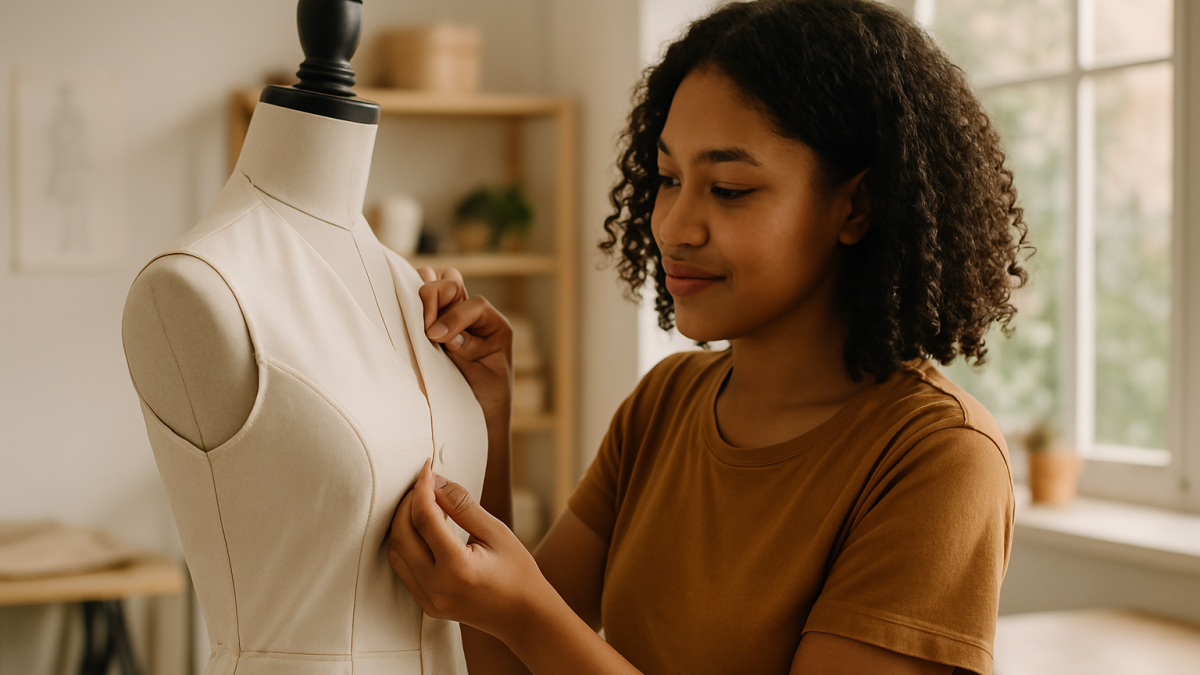Fitting Focus: Key Tips for Perfecting Your Sleeves

Unlock the secrets to perfect sleeve fitting! Check out our tips for adjustments and achieving the perfect fit every time
Mastering Sleeve Fit: Key Tips for Perfecting Your Sleeves
When it comes to sewing, one of the most common fitting issues that many sewists encounter is getting the sleeves to fit just right. Whether it's tightness around the arms, drooping fabric at the shoulder, or pulling across the chest, sleeve fitting can be tricky. But don't worry – you're not alone, and the solution is simpler than you think!
In this post, I’m sharing my top tips to help you fix sleeve fit issues and achieve a perfect fit every time you sew. We’ve talked about sleeves before, but today I want to break down some of the most important things to keep in mind when you’re working with them. Whether you're making adjustments to your sleeve pattern or fine-tuning your muslin, these tips will guide you to a better sleeve fit.
1. Understand the Sleeve Cap and Its Relationship to the Armhole
The sleeve cap, or the top curve of the sleeve, plays a major role in how your sleeve fits. A sleeve that’s too tight across the top or doesn’t have enough ease can lead to pulling at the shoulder and underarm, making the garment uncomfortable and unflattering.
Make sure to check the sleeve cap height and compare it with your armhole measurement. If the sleeve cap is too high or doesn’t match the armhole curve, you’ll need to adjust it. A good fit starts with understanding how the sleeve cap interacts with the armhole, so ensure there’s enough ease for movement.
2. The Bicep Area – Don’t Forget the Width!
Tightness around the bicep is another common issue. If the sleeve fits fine at the top but is uncomfortable around the bicep, you may need to add width to the sleeve. This is especially important if you have a more muscular or larger bicep.
Check the bicep circumference and ensure there’s enough room for comfort. If not, you can easily adjust the pattern by adding width to the sleeve seam, either along the underarm or side seam.
3. Assess the Grainline and Sleeve Drape
The grainline of the fabric is crucial to how the sleeve hangs and moves. A misaligned grainline can cause the sleeve to twist or pull in odd ways. Make sure that the fabric grain is aligned with the sleeve seam for a smooth fit. This ensures that the sleeve drapes as intended and doesn’t distort while wearing.
When you’re testing your sleeve fit, also pay attention to how the sleeve behaves when you move your arms. A well-fitted sleeve will allow for natural movement without feeling tight or restricting.
4. Test Your Muslin Before Committing to Final Fabric
One of the best ways to troubleshoot sleeve fit issues is by making a muslin. A muslin is a practice version of your garment, usually made from inexpensive fabric, that allows you to test the fit before cutting into your final fabric.
By testing the sleeve fit with a muslin, you can identify if the sleeve is too tight, too loose, or uncomfortable in any way. It gives you the opportunity to make adjustments to the sleeve length, width, or armhole before moving on to your final garment.
5. Use the Pivot and Slide Method for Adjustments
If you find that the sleeve is too tight or doesn’t fit properly, one useful technique is the pivot and slide method. This involves shifting the fabric in the pattern to add more ease or create a better fit. For instance, if you need more room at the bicep, you can pivot the pattern to increase the width.
This method helps to keep the sleeve’s design in line with the overall look of the garment while still providing the necessary adjustments for a comfortable fit.
Final Thoughts
Getting the sleeve fit just right is key to making a garment feel comfortable and look flattering. By taking the time to adjust the sleeve cap, bicep area, and checking the grainline, you can ensure your sleeves fit perfectly. And, as always, don't forget the value of making a muslin – it's one of the best tools for testing your fit before diving into your final fabric.
If you’re still feeling unsure about your sleeve adjustments, or if you’d like to dive deeper into pattern fitting techniques, check out my other resources. From personalized consultations to fitting guides and lessons, I’m here to help you get that perfect fit every time.
Happy sewing, and remember – perfect sleeves are just a few adjustments away!

Use Your Block or Sloper as a Comparison Tool
Your personal block (or sloper) is one of the most valuable fitting tools you can have. It reflects your actual measurements and proportions without style ease. Lay your block over the pattern:
- Align bust point, waist, and grainline
- Compare widths and lengths
- Highlight where the pattern needs changes
This simple check will save you time, fabric, and frustration.
Make a Fitting Checklist
Keep a list of your common fitting changes. Things like:
- Full bust adjustment (FBA)
- Swayback correction
- Lowered waistline
- Forward shoulder adjustment
Having this ready before you start a new project means you already know where to check and what to tweak—no surprises, no wasted time.
Sew With Confidence—Not Confusion
You deserve to sew with clarity, not frustration. Patterns aren’t perfect, but when you know how to read them and use your measurements and block, you are in control. You can start sewing sooner and with confidence.
Want more support? Watch the Fitting Focus Webinar Series on YouTube, or keep get on the mailing list to get updates when they are scheduled. That's where I walk you through different fitting focus steps in this new series.
Let’s stop the guesswork and sew garments that truly fit.
Talk later,
Andrea
Categories: : pattern fittimg
 Andrea Davis
Andrea Davis 
